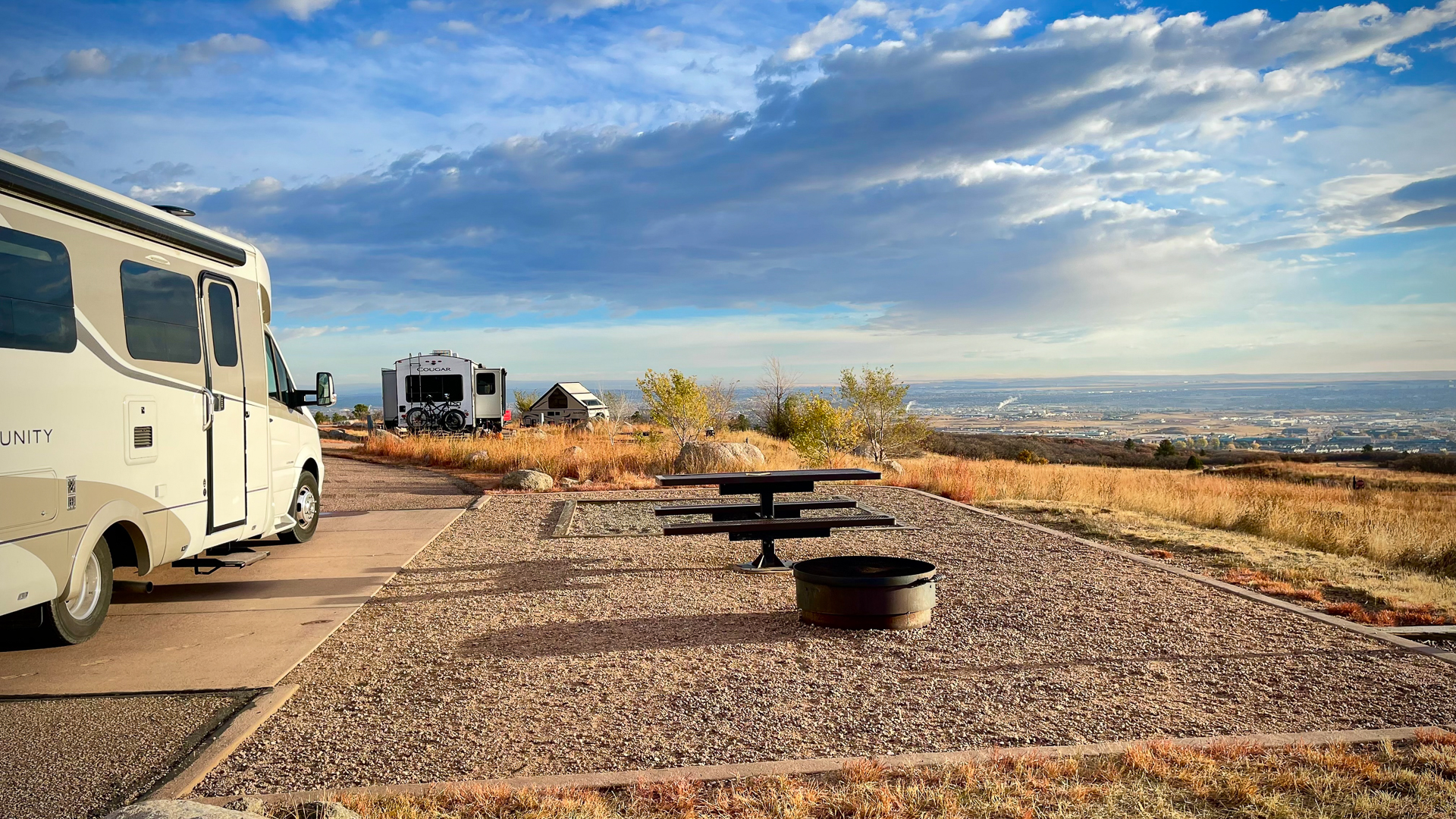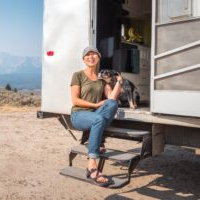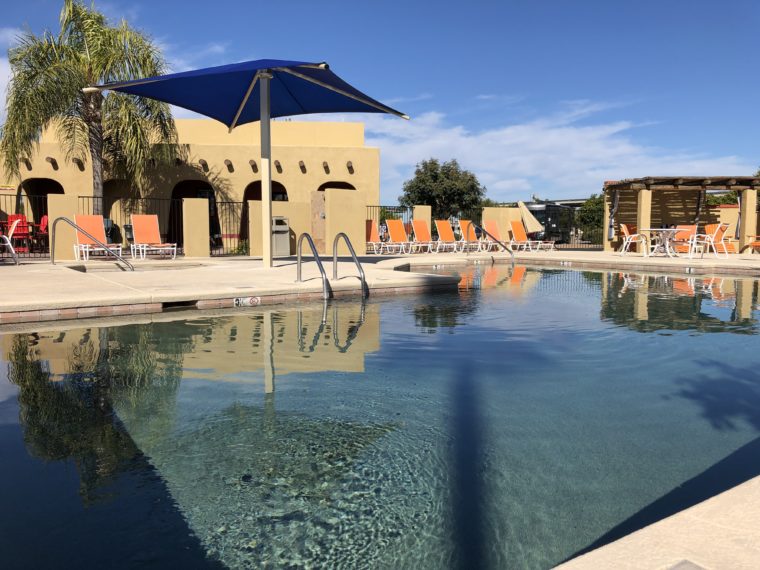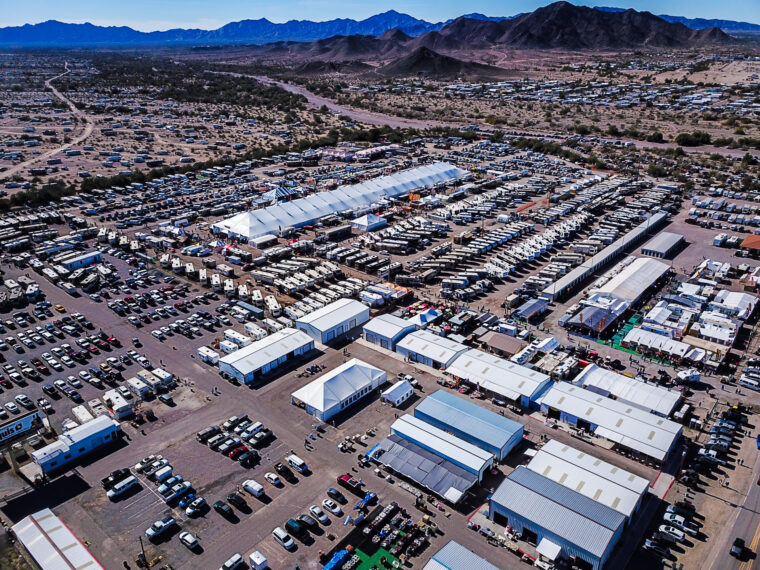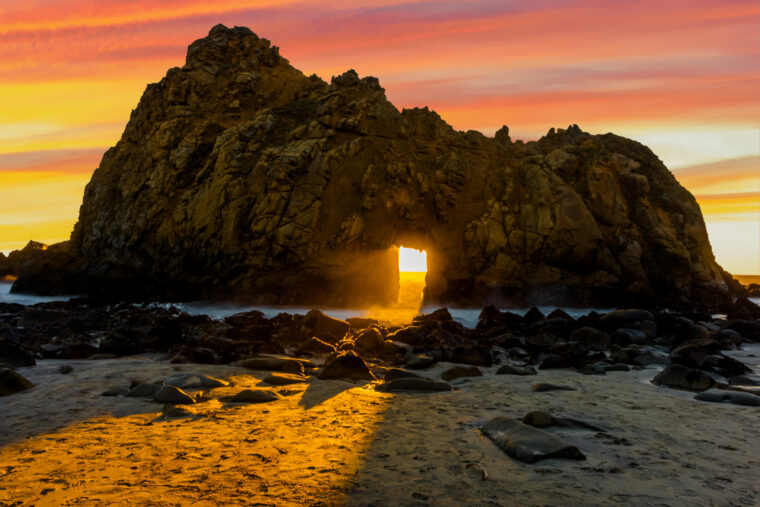Being able to dry camp in your rig gives you a lot more options of places to stay while traveling. Having hookups at an RV park or campground is convenient, but you can be just as comfortable dry camping.
What Is the Difference Between Dry Camping and Boondocking?
The terms “dry camping” and “boondocking” are often used interchangeably. They both refer to RV camping without access to electrical, water, and sewer hookups.
Boondocking is a specific type of dry camping, typically done in remote natural places without any sort of infrastructure. It’s sometimes called “wild camping.” Dry camping includes a wider variety of locations, like state park campgrounds, casino parking lots, retail parking lots, rest areas, or even someone’s driveway—often referred to as moochdocking.
Why Should You Dry Camp at a Campground?
Boondocking is alluring, but it can be intimidating to try since it requires more preparation, scouting, and the fact that you’re miles away from services and amenities.
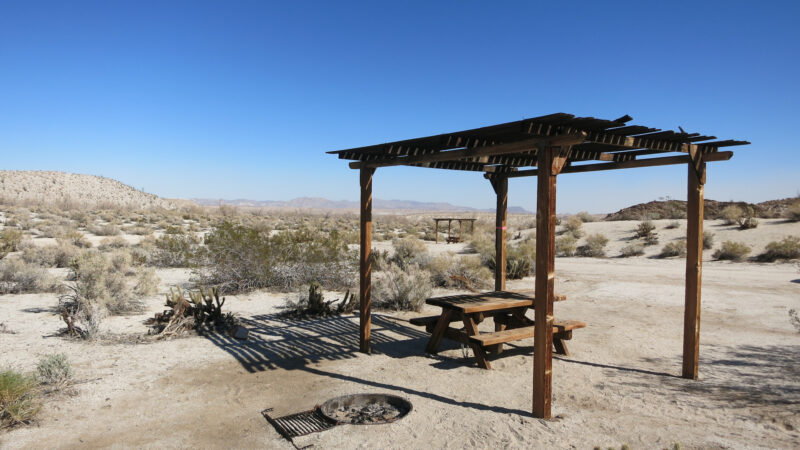
There are plenty of dry camping campgrounds in national forests, national parks, and state parks that are surrounded by the same beautiful landscapes as the boondocking options. Despite not having hookups, it’s not uncommon for these campgrounds to have water spigots, bathrooms, or even an on-site dump station. Dry camping in these spots is a great introduction to boondocking without the full commitment.
Make Boondocking Easier With These 5 Things
Benefits of Dry Camping
Dry camping isn’t always free, but it’s typically cheaper than camping at sites with full hookups. Not being reliant on hookups opens a plethora of places you can camp. Unique opportunities like staying at breweries, farms, or golf courses are available through Harvest Hosts, or camping at an established national forest campground tucked in the woods by a lake.
Dry camping campgrounds can also be found close to popular cities like Chicago or New York City, offering a place to stay without spending a fortune. Moochdocking in a friend or family member’s driveaway is a great way to spend quality time with them while still being able to sleep in your own bed.
And then there’s the need for a quick overnight stay in a parking lot or rest area after a long day’s drive en route to your destination. While this option isn’t necessarily fun, it’s convenient—no detour or campsite reservation necessary.
How to Find Safe RV Parking Overnight
The key to dry camping is being self-sufficient. This sounds harder than it actually is, and you most likely already have everything you need.

Tips When Dry Camping
1. Arrive with full fresh water tanks and empty gray and black water tanks
There’s nothing worse than running out of water mid-stay or having gray water overflow into your shower. Prevent either of those from happening by starting off your trip with a fresh slate.
2. Use a portable water storage container
Campgrounds without hookups may still have water spigots available. A water bladder lets you bring water back to your rig instead of moving it. Be aware that sometimes the water source is from a hand-pump spigot—making a 5-gallon water container the better choice.
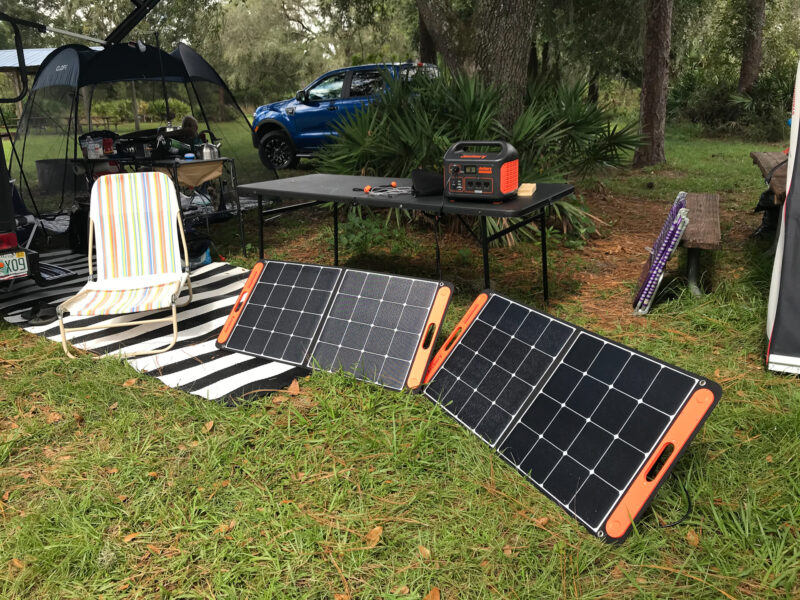
3. Rely on solar power
Solar power is a great alternative to using a generator or propane tank. It’s silent and environmentally friendly. Invest in either rooftop solar panels, a solar panel suitcase, or a portable power station.
Solar-Powered Devices You Need for Camping
4. Fill up your propane tank
Without an electrical hookup, you’re powering most of your appliances—like the fridge, hot water heater, cooktop/oven, and furnace—with propane. Make sure you have enough for the duration of your stay, especially if there’s cold weather in the forecast.
5. Research if generators are allowed
Campgrounds frequently have strict rules about generator usage and limit the hours they’re allowed to run. It’s common courtesy to not use them while overnighting in business parking lots and moochdocking in someone’s driveway. It’s also an unspoken rule to limit generator usage while boondocking.
6. Check if reservations are needed
Sites at established campgrounds on public lands are frequently offered on a first-come, first-served basis, but some may require reservations or are popular enough that reserving a spot is beneficial. These campgrounds are often small and can only fit shorter rigs, so double-check that sites are large enough to accommodate your RV.
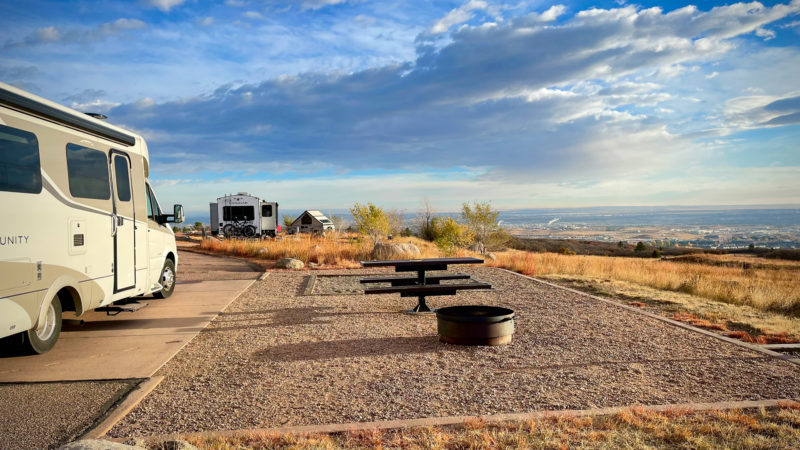
7. Adjust your daily habits
Dry camping means you can’t shower, wash your dishes, or run your microwave the same way you would when you’re plugged into hookups at an RV park. You can extend your stay without hookups by being mindful of your overall resource usage.
8. Get permission to stay overnight in business parking lots
It’s important to always get permission from a manager before you pull up for the night. Just because you’ve stayed in one Walmart parking lot doesn’t mean they all allow overnight parking—city ordinances can affect individual store policies. Remember to also ask where you should park, and take up as few spaces as possible.
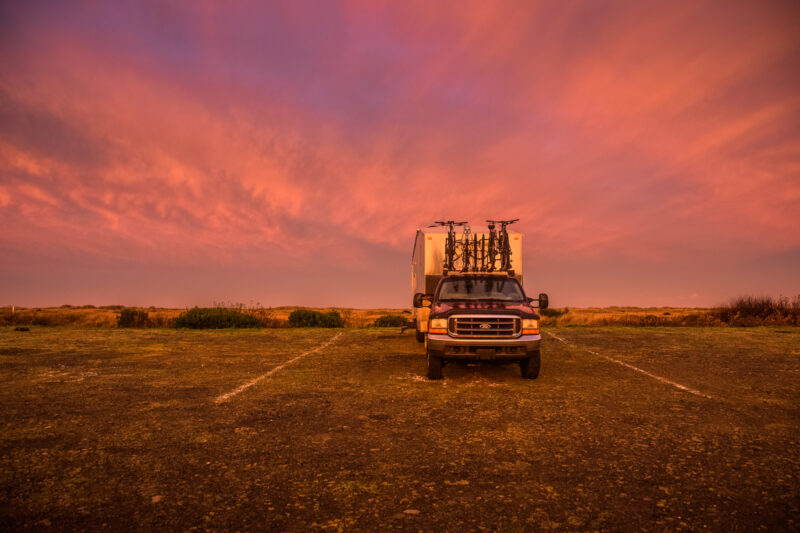
9. Not all rest areas allow overnight parking
Rest area stay limits vary from state to state. Some states restrict parking to just a few hours, while others are more lenient and have an 8-hour or longer parking limit. Be sure to read all signs posted.
10. Keep your slide-outs and camp chairs inside when staying in parking lots and rest areas
While overnighting in a parking lot or rest area is dry camping, you’re not actually “camping.” Treat it as a quick stop to energize and refuel before you get back on the road—this means keeping your slide-outs, jacks, camp chairs, and propane fire pits stored away.
What do I need to dry camp?
These are the three main things you need to dry camp:
- A power source: Solar panels, propane, or a generator.
- Fresh water: Fill your tanks before arriving. An external water bladder or container can be helpful if you need to get additional water.
- Be self-contained: Emptying your gray or black water on the ground is illegal. Stop by a dump station before arriving at your destination. Consider getting an RV black water caddy for just-in-case situations.
Your first few dry camping trips probably won’t go as planned, but that’s okay, we’ve all been there.
How do you RV without hookups?
You don’t need to rely on hookups with good planning and familiarization with your water, electricity, and tank usage.
Do you need a generator for dry camping?
A generator isn’t necessary if you have solar panels to charge your house batteries. It’s important to be familiar with your solar power system and electricity usage first. Check the conditions of your house batteries before heading out and know how long you can run on them before they’re drained. It’s a good idea to first do a practice run at a campground where you have hookups.
Dry camping is a great alternative to plugging in—not only do you get to stay in some amazing places, but you can also save money. There’s also the sense of accomplishment and independence you gain from being self-reliant.
